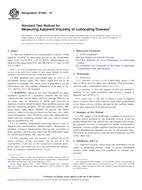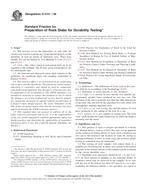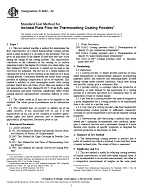1.1 This guide covers the identification of the information that is necessary to document emergency medical care in a computerized patient record that is part of a paperless patient record system. The intent of a paperless patient record system will be to improve efficiency and cost-effectiveness.
1.2 This guide is a view of the data elements to document the types of emergency medical information that would be valuable if available in the computerized patient record.
1.2.1 The patient’s summary record and derived data sets will be described separately from this guide.
1.2.2 As a view of the computerized patient record, the information presented will conform to the structure defined in other ASTM standards for the computerized patient record.
1.3 This guide is intended to amplify Guides E1239, E1384, and F1629 and the formalisms described in Practice E1715.
1.3.1 This guide details the use of data elements already established in these standards for use during documentation of emergency care in the field or in a treatment facility and places them in the context of the object models for health care that will be the vehicle for communication standards for health care data.
1.3.1.1 The codes for the data elements referred to in this guide will be developed in consideration of national or professional guidelines whenever available. The EMS definitions are based on those generated from the national consensus conference sponsored by NHTSA and from ASTM F30.03.03 on EMS Management Information Systems. The Emergency Department (ED) definitions will consider those recommended by the CDC workshop on ED definitions scheduled for January 1996. The hospital discharge definitions will be developed in consideration of existing requirements for Medicare and Medicaid payment.
1.3.1.2 The ASTM process allows for the definitions to be updated as the national consensus changes. When national or professional definitions do not exist, or whenever there is a conflict in the definitions, the committee will recommend a process for resolving the conflict or present the various definitions within the document along with an explanation for the purpose of each definition.
1.3.2 This guide reinforces the concepts set forth in Guides E1239 and E1384 that documentation of care in all settings shall be seamless and be conducted under a common set of precepts using a common logical record structure and common terminology.
1.4 The computerized patient record focuses on the patient.
1.4.1 In particular, the computerized patient record sets out to ensure that the data document includes:
1.4.1.1 The occurrence of the emergency,
1.4.1.2 The symptoms requiring emergency medical treatment,
1.4.1.3 The medical/mental assessment/diagnoses established,
1.4.1.4 The treatment rendered, and
1.4.1.5 The outcome and disposition of the patient after emergency treatment.
1.4.2 The computerized patient record consists of subsets of the data computerized by multiple care providers at the time of onset/scene and enroute, in the emergency department, and in the hospital or other emergency health care settings.
1.4.3 The computerized patient record focuses on the documentation of information that is necessary to support patient care but does not define appropriate care.
Product Details
- Published:
- 01/01/1998
- Number of Pages:
- 27
- File Size:
- 1 file , 180 KB


